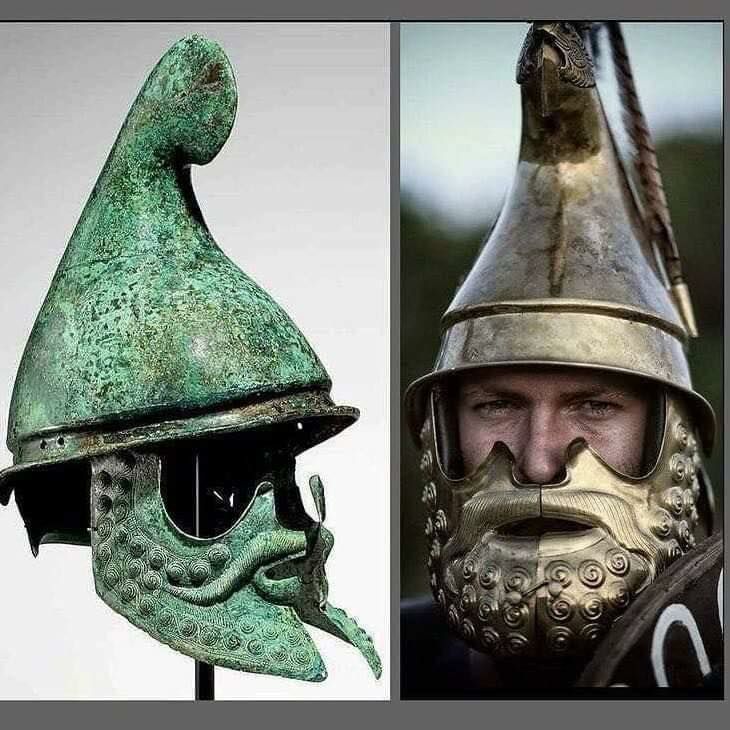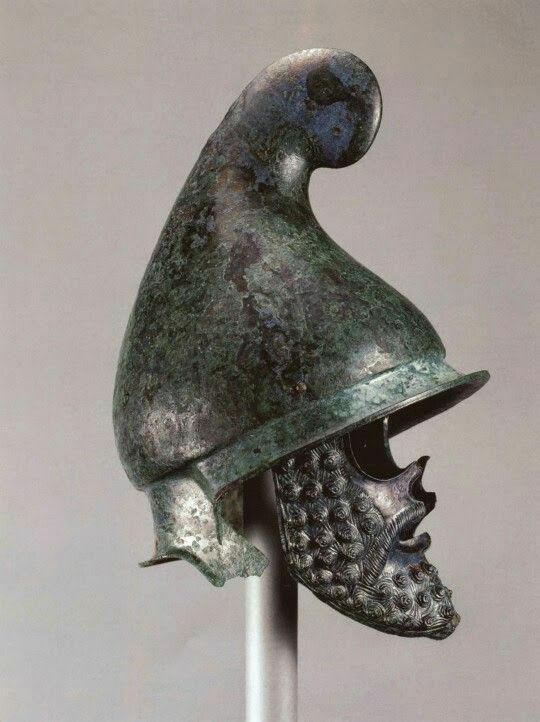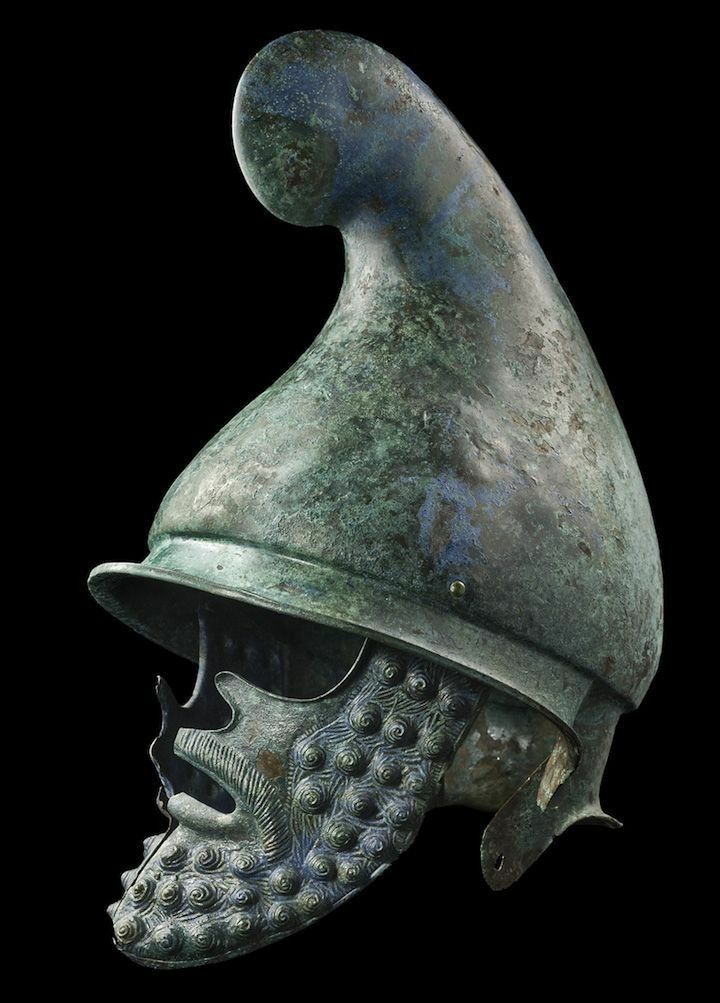Bronze Phrygian Helmet, Greek, Late Classical to Early Hellenistic, c. 350-300.
The Phrygian helmet, also known as the Thracian helmet, was a type of helmet that originated in ancient Greece and was widely used in various regions including Thrace, Dacia, Magna Graecia, and the Hellenistic world. It remained in use until the Roman Empire.
The helmet was named after its distinct shape, particularly the high and forward-inclined apex, resembling the caps commonly worn by the Phrygian and Thracian peoples. Most Phrygian helmets were made of bronze, following the typical material for Greek helmets. The skull of the helmet was typically raised from a single sheet of bronze, while the forward-pointing apex was sometimes made separately and then attached to the skull through rivets. The front of the helmet was often extended into a peak, which provided shade for the wearer’s eyes and offered protection to the upper part of the face against downward blows.
Large cheekpieces, separate from the skullpiece, provided additional protection to the face. In some cases, these cheekpieces were so large that they met in the center, leaving a gap for the nose and eyes. They would often feature embossed and engraved decorations, mimicking a beard and mustache.
Historical accounts mention the Phrygian helmet being worn by Macedonian cavalry during the reign of King Philip, though his son Alexander the Great is said to have preferred the open-faced Boeotian helmet for his cavalry. The royal burial in the Vergina Tomb contained a variation of the Phrygian helmet, made of iron, indicating its use by cavalry. Representations of Alexander the Great’s army often depict infantry wearing Phrygian helmets, as seen on the contemporary Alexander sarcophagus.
The Phrygian helmet enjoyed prominence towards the end of Greece’s classical era and during the Hellenistic period, gradually replacing the earlier Corinthian type that had been prevalent since the 5th century BC.
Hits: 0







